International Journal of Aquaculture and Fishery Sciences
Population dynamics of Rainbow Sardines, Dussumieria acuta (Valenciennes, 1847) from Pakistani waters
Abdul Baset1,2*, Qun Liu2, Baochao Liao2, Abdul Waris3, Han Yanan2 and Zhang Qingqing2
2College of Fisheries, Ocean University of China, Qingdao 266003, China
3Department of Biotechnology, Quaid-i-Azam University, Islamabad, Pakistan
Cite this as
Baset A, Liu Q, Liao B, Waris A, Yanan H, et al. (2020) Population dynamics of Rainbow Sardines, Dussumieria acuta (Valenciennes, 1847) from Pakistani waters. Int J Aquac Fish Sci 6(2): 029-034. DOI: 10.17352/2455-8400.000053Length frequency data of Rainbow Sardines, Dussumieria acuta were collected and measured from the coast of Pakistan during 2015, ranging from 5 to 19 cm (total length). Weight ranges were measured from 2 to 64 g. The length frequency data were analysed for the estimation of population dynamics, so b was estimated at 2.70. The estimated von Bertalanffy growth function parameters of 19.95 cm (L∞) and 0.730 year-1 (K). The mortality rate Z= 1.84 year-1, M= 1.59 year-1 F= 0.25 year-1 and E= F/Z= 0.135. The yield-per-recruit analysis indicated that when tc was 1, Fmax was 1 year-1. Currently, the age at first capture is about 1 year and Fcurrent was 0.25 year-1. Therefore, Fcurrent was smaller than Fmax. With Gulland method, the biological reference point for fishery (Fopt) was estimated as 1.59 year1, which is also higher than current fish mortality. Therefore, the present study shows that the Dussumieria acuta fishery is safe in Pakistan.
Introduction
The growth in the world population has resuLted an increase in the consumption of animal protein, and fishery products are important to overcome this demand for human populations [1]. Pakistan is endowed with marine fisheries resources which are not only to supply the valuable animal protein but also contribute to the national economy of the country, take part in human development and employment [2]. Pakistan exports fish and fisheries products in the form of chilled, frozen, cured, and canned to 47 countries of the world [3].The exported fish and fishery products were 155,671 metric tons valued at 367,472 USD during 2013-2014 [4].
Pakistan has a long coastline of 1 120 km from the southeast Indian border to the northwest Iranian border (Figure 1). It has an EEZ (exclusive economic zone) of 2 40 000 km2 with a continental shelf area of about 50 270 km2. Pakistani water has rich commercially important fisheries resources comprise of about 250 demersal fish species, 50 small pelagic species, 15 medium-sized pelagic species, and 20 large pelagic fish species [2].
Small pelagic fish are important in the food web of a marine ecosystem, playing a significant role in connecting the lower and upper trophic levels, because a substantial number of predatory fish, seabirds and marine mammals feed on them [5, 6, 7]. Fishes belong to family Dussumieriidae is commonly known as round herrings, are small pelagic fishes widely distributed in tropical and temperate seas, mainly in the Indo-Pacific region [8]. Family Dussumieriidae comprises 2 recognized genera and 9 species. Genus Dussumieria has two species Dussumieria acuta and D. elopsoides [9], but only D. acuta has been reported from Pakistani waters [10].
The Rainbow sardine, D. acuta is locally known as Tel-tampri, which is a small pelagic clupeoid fish [10]. It is an important commercial fish, distributed in Indo-Pacific: Persian Gulf (and perhaps south to Somalia), along the coasts of Pakistan, India, and Malaysia to Indonesia (Kalimantan) and the Philippines [9]. Its maximum size is 20 cm in Pakistani waters while the common length is about 15 cm. Caught with setnets, beach and purse seines, and shallow water trawls [10], in the depth range from 10 to 20 m [9].
Study of different population parameters like the asymptotic length (L∞) and growth coefficient (K), mortalities (natural and fishing) rate, and exploitation level (E) are essential for the planning and management of marine resources. Lack of awareness of population structure and proper evaluation of the exploitation of marine resources emphasized the importance of a detailed study to facilitate better management of the resource. There are many tools for assessing the exploitation level and status of the stock. Of these, FiSAT (FAO-ICLARM Stock Assessment Tools, Gayanilo et al., 2003) has been commonly used for estimating population parameters of fishes [11-13], because primarily it requires only length-frequency data but also enables related analysis, of size-at-age, catch-at-age, selection, and other analysis. ELEFAN is a non-parametric method widely used in fish length frequency analysis, which is an ad hoc and does not depend on estimating the parameters of cohort distributions directly. So it makes only weak assumptions about the distribution of sizes within the cohorts. The modal lengths of each cohort are fixed to lie upon a curve described by growth models such as von Bertalanffy growth model, thus it makes a strong assumption about growth [14]. These tools are especially appreciated for Pakistani marine resources and estimate parameters such as length-weight relationship, growth, mortality rate, biological reference points, growth performance index and virtual population analysis. There are abundant studies focused on length based stock assessment e.g. Beverton and HoLt, 1957 [20]; Pauly, 1983, 1984 [19, 23]; Pitcher, 2002 [14].
Some studies are done on Rainbow sardine, D. acuta from Indian waters such as on length-weight relationship from Southern coast of Karnataka (Abdurahiman et al., 2004) on the age and growth rate from Mandapam area [15, 36] and on diurnal variation in feeding habits of D. acuta from the gulf of Mannar and the Palk bay [8] but there was no work done from Pakistani waters. The present work was designed to evaluate the population dynamics of D. acuta from Pakistani waters. We hope that it would be helpful for the proper management of the fisheries and the optimum utilization of the resources of Pakistan.
Materials and methods
A total of 1234 individuals of D. acuta were collected and measured from the fishermen catches using setnets and beach seines at random during 2015, from the coast of Pakistan. The Total Length (TL) of each fish was taken to the nearest 1.0 cm using the measuring board. The Weight (W) of each fish was weighted to the nearest 1.0 g. The samples were male and female combined.
The length frequency data of D. acuta during 2015 were analysed using computer software packages FiSAT-II (FAO-ICLARM stock assessment tool, Gayanilo et al., 2003) [16]. In this study, we estimated parameters such as length-weight relationship, growth, mortality rate, growth performance index, virtual population analysis (VPA), and biological reference point.
The relationship between length (L, cm-TL) and weight (W, g) of D. acuta was established by using a power equation [17]: W=aLb
Where a = constant condition factor and b = an exponent slope or allometric growth parameter.
The growth parameters of D. acuta during 2015 was calculated by using von Bertalanffy growth function (VBGF) [18]: Lt = L∞ (1−exp−K (t−t0)),
Where Lt was the length (TL-cm) at age t. L∞ is the asymptotic length, K is the growth coefficient and t0 was the hypothetical age at which length equal to zero (usually negative) and was calculated by empirical formula [19], as log10 (-t0) =-0.39220.-275log101.-038log10K.
From the estimated growth parameter values (L∞, K) of D. acuta during 2015, the total annual mortality (Z) were estimated using the length converted catch curve analysis method [19,20]: Ln (Nt) =Ln (N0)-Zt
Where Nt is the population size at age t, N0is population size at age 0.
The natural mortality coefficient was obtained by
log10M = −0.006−0.279log10L∞ + 0.654log10K +0.6434log10T,
Where T is the average annual sea surface temperature, which was 27 °C in Pakistani waters. The fishing mortality (F) was calculated by F=Z-M and exploitation ratio (E) was calculated from E=F/Z.
Biological reference points of the optimum fishing mortality were calculated by Gulland method [21] as Fopt = M
The Beverton-HoLt yield per recruit model was calculated by: , where Yw/R was the yield per recruitment, tc was the mean age at first capture, tr was the recruitment age, tλ was the asymptotic age, Qn was a constant and equals to 1, −3, 3 and −1 when n was 0,1,2 and 3, respectively [22] .
The estimation of L∞ and K were used to calculate the growth performance index (φ’) of D. acuta in 201523: φ’=log10K + 2log10 L∞
Results
A total of 1234 individuals during 2015of D. acuta were examined during this study. The minimum length was 5 cm and the maximum was 19 cm, and the dominant individuals are ranged 12 to 15 cm total length (TL) (Figure 2). Weights were measured from 2 to 64 g. The length-weight relationship of both sexes combined was: W=0.0233x2.7044 (R2 = 0.995) (Figure 3).
Growth parameters for D. acuta were estimated using the ELEFAN method in the FiSATII computer software package. The von Bertalanffy growth parameters for D. acuta were L∞= 19.95 (TL-cm) and K=0.730 year-1 (Figure. 4) with the goodness of fit model at Rn =0. 168. The t0 values were calculated as -0.246 years.
Applying VBGF growth parameters (L∞, K) and using the length converted catch curve analysis, the total mortality rate (Z) were 1.84year-1 (Figure 5) with Pauly empirical equation, natural mortality was calculated as M =1.59 year-1(with L∞= 19.95 cm, K=0.730 year-1 and average annual sea surface temperature 27 °C). The fishing mortality was calculated as F=Z-M= 0.25year1.
The exploitation ratio (E) was calculated from F/Z = 0.1351year-1. Because = 15.988 cm and L’ =15 cm, the total annual mortality estimated by the Beverton and HoLt’s method is: Z =2.92per year.
As showed in yield-per-recruit contour map (Figure 6), when tc was assumed to be 1, Fmax was estimated as 1 year-1. Because the current age at first capture is about 1 year and Fcurrent was 0.25 year-1, therefore Fcurrent was smaller than Fmax. This indicated that current fishing mortality is in manage condition. When using Gulland (1971) biological reference point, Fopt was equal to M (1.59 year-1). The current fishing mortality rate of 0.25 year-1 was lower than the target biological reference points (BRP). It is recommended that present condition of D. acuta fishery in Pakistan is safe.
The growth performance index (φ’) was estimated at 2.463 based on the estimated growth parameters for D. acuta during 2015from Pakistani waters.
The resuLts of virtual population analysis (VPA) were analyzed from pooled data in 2015 and from the input of growth and length-weight relationship parameters (L∞, K, a, b) given above. The output of the length structured VPA using FiSAT for D. acuta is in Figure 7 and shows that the maximum fishing mortality was at 18 and 19cm (TL) length.
Discussion
The length-weight relationship (LWR) is basic in the biological study of fishes and their stock assessments, which makes it easy for the estimations of metamorphosis, gonad maturity and rate of feeding of fish [23,24]. Methods to estimate the length-weight relationship of fishes are described by Pauly [19]. In the present study, the value of slope “b” of D. acuta was estimated at 2.704 (R2 =0.995) in 2015 from the Pakistani waters, which indicates the negative allometric growth [25]. Because when the b value is lower than 3 it determines the negative allometric growth when greater than 3 it is positive allometric and when it equal to 3 is isometric growth. The estimated value of slope b was compared with the resuLts obtained from the other areas of the world of the same species (Table 1), the b values were 2.938 for male and 2.894 for female from Indian waters [28]. The above values look closer to the present study. It was 3.228 (for pooled) from Kenyan waters [29], 3.536 from Indian waters [15], 3.142 from Indonesian waters [30], and 3.03 from Turkish waters by Taskavak and Bileenoglu (2001). These values were greater than the present study values.
The differences among the slope values may be because of the changes in regions, seasonal fluctuations, environmental parameters and physical conditions of the fish at the time of sample collection, sex gonad development and nutritive conditions, sample size, different observed length range during the study etc [26,27,17].
In general, fish may grow faster when the population density is decreased or the habitat is improved. VBGF parameters, i.e. asymptotic length L∞, growth rate K and the hypothetical age t0 were estimated from the length frequency data of D. acuta during 2015from the Pakistani waters and were compared with the resuLts in previous studies from the other areas (Table 2). In this study the VBGF growth coefficient was estimated, using a non-parametric method usually used in length frequency analysis of fish, which is basically ad hoc and does not depend on estimating the parameters of cohort distribution directly. So it makes only weak assumption about the distribution of sizes within the cohorts. The model lengths of each cohort are fixed to lie upon a curve described by growth models such as von Bertalanffy growth model, thus it makes a strong assumption about growth [14].
In the present study, the ELEFAN (Electronic length frequency analysis) method in the FiSATII computer software package was used to estimate the VBGF parameters (L∞ and K). L∞ was 19.95 cm and K was 0.730. The asymptotic length L∞ was estimated at 19.20 cm and K was 0.20701 from Indian waters15 which were closer to the present study. Thet0=-1.34 from Indian waters which is lower than the present study t0= - 0.16491. The differences of those values in Table 2 maybe because of their different sampling strategies, data sets, estimation methods, life patterns and ecological characteristics [31].
The present study used length-converted catch curve analysis for estimation of the mortality rate of D. acuta in 2015 using input values of the VBGF growth parameters given above from the Pakistani waters.
The mortality values in this study (total mortality Z, natural mortality M and fishing mortality F) were 1.84, 1.59 and 0.25 year-1respectively in 2015. The exploitation ratio (E) was calculated from E= F/Z = 0. 135.There was no work done found on mortality from other areas to compare with the present study. However, the difference among values from different areas are because of unfavorable environmental conditions or commercial demand, which increased fishing efforts in that region. There are many causes for the mortality rates, such as fishing, pollution, diseases, predation and old age in the fish community [32]. However, in the present study, the fishing mortalities (0.25) are lower than natural mortality (1.59) which indicates that the stock of D. acuta is in managing the condition in Pakistan.
The total annual mortality estimated by the Beverton and HoLt’s method was 2.92 per year for 2015, which was greater than the resuLts of length-converted catch curve analysis. Because the length converted catch curve analysis is more commonly used, so we chose Z=1.84 as our final resuLt.
The definition and widespread use of BRPs (Biological reference points) have greatly benefitted fisheries management. For each managed fish stock, the fishing mortality- and biomass-based BRPs can be combined as a “control law” to specify fishing mortality rates as a function of stock biomass [33,34]. BRPs are broadly used to describe safe levels of harvesting for marine fish populations i.e. Either minimum acceptable biomass levels or maximum fishing mortality rates [35].
The yield-per-recruit analysis (Figure 6) indicated that when tc was 1, Fmax was 1 year-1. Because the current age at first capture is about 1 year and Fcurrent was 0.25 year-1 which indicated that the current fishing mortality is low. Also the current fishing mortality rate estimated here is lower than the Gulland (1969) target biological reference point (Fopt, 1.59 year-1). Therefore, we may suggest that the D. acuta fishery is in manage condition in Pakistani waters. However, because the information available is limited, it is very difficuLt to compare the life history parameters estimated in this study with those from other studies, especially what ecological/biological process contributes to such differences as well as the spatial differences and/or temporal differences which can influence the life history parameter estimates.
- Jeong YH, Myeong JI, Park NB, Park MS, Park JJ, et al. (2013) FAO the State of World Fisheries and Aquaculture 2012.
- FAO J (2009) Fishery and aquaculture country profiles. Food and Agriculture Organization of the United Nations, 8.
- Memon AM, Liu Q, Memon KH, Baloch WA, Memon A, et al. (2015) Evaluation of the fishery status for King Soldier Bream Argyrops spinifer in Pakistan using the software CEDA and ASPIC. Chinese journal of oceanology and limnology 33: 966-973. Link: https://bit.ly/3coekwn
- Baset A, Liu Q, Hanif MT, Liao B, Memon A, et al. (2017) Estimation of maximum sustainable yield using production modeling: A stock appraisal of Indian Oil Sardine (Sardinella longiceps) from Pakistani Waters. Pak J Zool 49: 425-759. Link: https://bit.ly/2Lg6vwz
- Rice J (1995) Food web theory, marine food webs, and what climate change may do to northern marine fish populations. Canadian Special Publication of Fisheries and Aquatic Sciences 561-568. Link: https://bit.ly/35Q5qoS
- Baset A, Liu Q, Liao B, Waris A, Ahmad I, et al. (2020) Population Dynamics of Saddle Grunt Fish, Pomadasys maculatus (Bloch, 1793) from Pakistani Waters. Bioprocess Engineering 4: 1-8. Link: https://bit.ly/2LobgnP
- Cury P, Bakun A, Crawford RJ, Jarre A, Quinones RA, et al. (2000) Small pelagics in upwelling systems: patterns of interaction and structural changes in “wasp-waist” ecosystems. ICES Journal of Marine Science 57: 603-618. Link: https://bit.ly/2zws9tO
- Baset A, Liu Q, Liao B, Waris A, Yanan H, et al. (2020) Growth and Mortality of Sillago sihama (Forsskål) from Karachi Coast, Pakistan. Asian Journal of Research in Zoology 42-52. Link: https://bit.ly/3fF8gBu
- Fishebase. Link: https://bit.ly/2LkA5Bo
- Bianchi G (1985) Field guide to the commercial marine and brackish-water species of Tanzania. FAO. Link: https://bit.ly/2SW2sK6
- Jayawardane PAAT, McLusky DS, Tytler P (2002) Estimation of population parameters and stock assessment of Penaeus indicus (H. Milne Edwards) in the western coastal waters of Sri Lanka. Asian Fisheries Science 15: 155-166.Link: https://bit.ly/3ci01cB
- Jayawardane PAAT, McLusky DS, Tytler P (2003) Population dynamics of Metapenaeus dobsoni from the western coastal waters of Sri Lanka. Fisheries Management Ecology 10: 179-189. Link: https://bit.ly/3bfWx9e
- Papaconstantinou C, Kapiris K (2001) Distribution and population structure of the red shrimp (Aristeus antennatus) on an unexploited fishing ground in the Greek Ionian Sea. Aquatic Living Resources 14: 303-312. Link: https://bit.ly/2LkyyLo
- Pitcher TJ (2002) A bumpy old road: size‐based methods in fisheries assessment. Handbook of Fish Biology and Fisheries: Fisheries 2: 189-210. Link: https://bit.ly/3cohiRx
- Liao B, Zhang K, Shan X, Chen X, Baset A, et al. (2017) Application of Bayesian surplus production model and traditional surplus production model on stock assessment of the southern Atlantic albacore (Thunnus alalunga). Link: https://bit.ly/2WLOcER
- Gayanilo F, Sparre P, Pauly D (2003) FAO. ICLARM Stock Assessment Tool (FiSAT-II). User’s Guide FAO. Computerized Information Series (Fisheries).
- Froese R (2006) Cube law, condition factor and weight–length relationships: history, meta‐analysis and recommendations. J Appl Ichthyol 22: 241-253. Link: https://bit.ly/3dE5Z81
- Liao B, Liu Q, Zhang K, Baset A, Memon AM, et al. (2016) A continuous time delay-difference type model (CTDDM) applied to stock assessment of the southern Atlantic albacore Thunnus alalunga. Chinese journal of oceanology and limnology 34: 977-984. Link: https://bit.ly/3bnR1S3
- Pauly D (1983) Some simple methods for the assessment of tropical fish stocks. Food & Agriculture Org 234. Link: https://bit.ly/3cq1D3W
- Beverton RJH, Holt SJ (1956) A review of methods for estimating mortality rates in fish populations, with special reference to sources of bias in catch sampling. Rapp Proces-verb Reun Cons Int Explor Mer 140: 67-83. Link: https://bit.ly/2WofPoO
- Baset A, Qun L, Pavase TR, Hameed A, Niaz Z (2017) Estimation of maximum sustainable yield of Scomberomorus species fish stocks in Pakistan using surplus production models. Indian J Mar Sci 46. Link: https://bit.ly/3bkWLvJ
- Pitcher TJ, Hart PJ (1982) Fisheries Ecology: Croom Helm. London, UK. Link: https://bit.ly/3dB47Ni
- Pauly D, Munro JL (1984) Once more on the comparison of growth in fish and invertebrates. Fishbyte 2: 1-21. Link: https://bit.ly/2YRsxxP
- Le Cren ED (1951) The length-weight relationship and seasonal cycle in gonad weight and condition in the perch (Perca fluviatilis). J Anim Ecol 201-219. Link: https://bit.ly/3fJx9wb
- King M (1995) Fisheries Biology Assessment and Management. Black Well Science. Link: https://bit.ly/2SXrKYy
- Biswas SP (1993) Manual of methods in fish biology. South Asian Publishers, New Delhi 157. Link: https://bit.ly/2LkUINL
- Wootton RJ (1998) Ecology of Teleost Fishes Kluwer Academic Publishers. Link: https://bit.ly/2xVbDDu
- Mohsin M, Mu Y, Memon AM, Mehak A, Syed Babar Hussain S, et al. (2017) Capture fisheries production and its economic role in Pakistan. 46. Link: https://bit.ly/2xWvTEQ
- Mbaru EK, Mlewa CM, Kimani EN (2010) Length–weight relationship of 39 selected reef fishes in the Kenyan coastal artisanal fishery. Fish Res 106: 567-569. Link: https://bit.ly/2yBHsle
- Pauly DAN, Martosubroto P, Saeger J (1996) The Mutiara 4 surveys in the Java and southern South China Seas, November 1974 to July 1976. Baseline Studies of Biodiversity: the Fish Resources of Western Indonesia. Manila, Philippines: ICLARM. 312. Link: https://go.aws/2WKkz71
- Adams PB (1980) Life history patterns in marine fishes and their consequences for fisheries management. Fishery bulletin 78: 1-12. Link: https://bit.ly/2LiaE3h
- Royce WF (1970) Theory of Fish Population Dynamics as the Biological Background for Rational Exploitation and Management of Fishery Resources. George V. Nikolskii. Translated from the Russian edition (Moscow, 1965) by JES Bradley. R. Jones, Ed. Oliver and Boyd, Edinburgh, 1969. 16: 324. Link: https://bit.ly/2TakkBp
- Rosenberg A, Mace P, Thompson G, Darcy G, Clark W, et al. (1994) Scientific review of definitions of overfishing in US Fishery Management Plans. NOAA Tech. Memo. Link: https://bit.ly/2AikAaM
- Caddy JF, Mahon R (1995) Reference points for fisheries management. Rome: Food and Agriculture Organization of the United Nations 374. Link: https://bit.ly/2YW1Ckr
- Collie JS, Gislason H (2011) Biological reference points for fish stocks in a multispecies context. Can J Fish Aquat Sci 58: 2167-2176. Link: https://bit.ly/3bhbGXO
- Abdurahiman KP, Nayak TH, Zacharia PU, Mohamed KS (2004) Length-weight relationship of commercially important marine fishes and shellfishes of the southern coast of Karnataka, India. NAGA World Fish Centre Quarterly 27: 9-14. Link: https://bit.ly/35QclOS

Article Alerts
Subscribe to our articles alerts and stay tuned.
 This work is licensed under a Creative Commons Attribution 4.0 International License.
This work is licensed under a Creative Commons Attribution 4.0 International License.
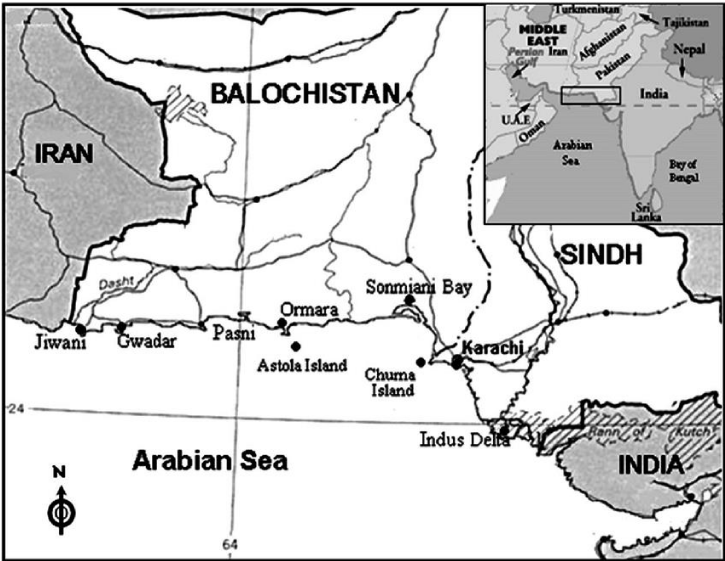
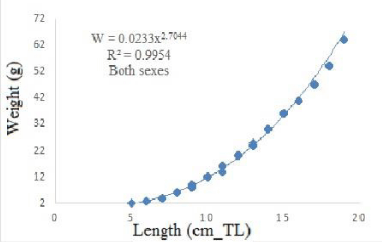
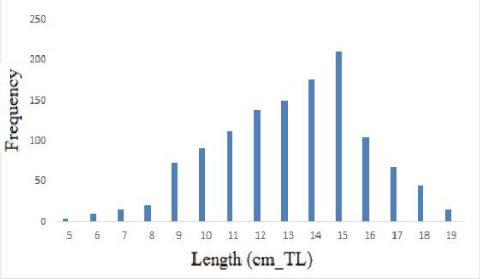
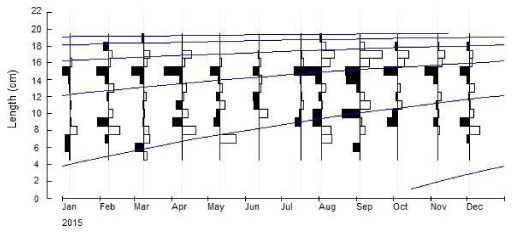
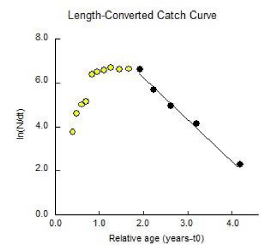
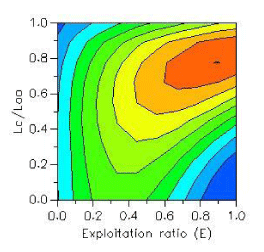
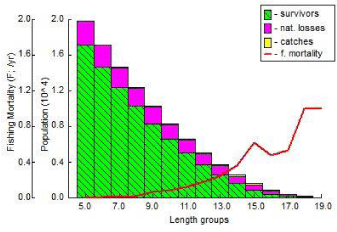
 Save to Mendeley
Save to Mendeley
